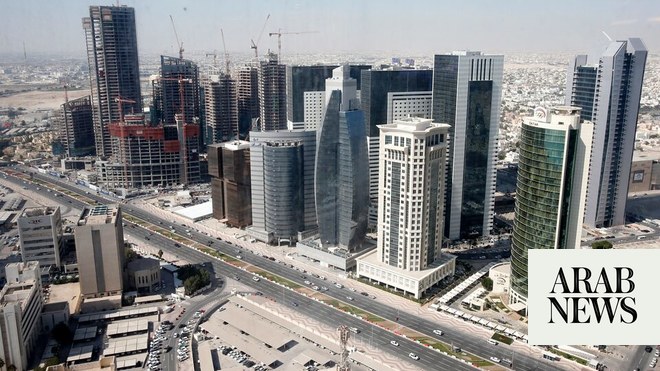RIYADH: Expatriate remittances from Saudi Arabia reached $3.2 billion in June, reflecting an annual increase of 11.32 percent, according to the latest data from the Saudi Central Bank, also known as SAMA.
This figure underlines the Kingdom's significant role in global remittance flows and is a testament to the economic dynamics influencing the region.
The latest SAMA bulletin indicated that remittances sent abroad by the Kingdom's citizens decreased by 1% year-on-year to SR5.12 billion. This follows a peak in May, which was the highest in a year and a half.
Saudi Arabia has long been a magnet for expatriates seeking lucrative work opportunities. With robust economic growth and high wage levels, the Kingdom offers an attractive destination for professionals from around the world.
The average executive salary in Saudi Arabia exceeds $100,000 annually, which is not only among the highest in the Middle East, but also sets a global benchmark. This competitive compensation is a major draw for expatriates, contributing to the Kingdom's substantial remittance outflows.
The increase in remittances can be attributed to several interrelated factors. The labor market recovery following the COVID-19 pandemic has led to increased employment opportunities and consequently higher earnings for expatriates. In addition, the Saudi government's strategies to attract and retain foreign workers, including favorable employment policies and incentives, have further strengthened the expatriate workforce.
Technological advances have also played a key role in facilitating this growth. Innovations in financial technology and mobile banking have made sending money abroad faster, safer and less expensive. With the advent of digital payment systems and mobile applications, expatriates can transfer funds easily, helping to increase the volume of remittances.
The demographic composition of Saudi Arabia provides additional context for this increase in remittances. Non-Saudis make up 41.6% of the Kingdom's population, totaling approximately 13.4 million individuals. This diverse expatriate community includes significant numbers from countries such as Bangladesh, India, Pakistan, Yemen and Egypt. Other countries contributing to the expatriate population include Sudan, the Philippines, Syria, Nepal and Jordan,
The high net migration rate, with an average of 79 people per day, reflects the Kingdom's strong economic attractiveness and its role as a hub for the international workforce.
Saudi Arabia and the United Arab Emirates are key players in the global remittance landscape. In 2022, combined remittance outflows from these two countries totaled approximately $79 billion. Saudi Arabia alone accounted for $39.3 billion, highlighting its significant impact on the economies of remittance-receiving countries. For example, Pakistan and Bangladesh, two of the first recipients of Saudi remittances, benefit enormously from these financial inflows, which support households and stimulate economic development.
In Pakistan, Saudi Arabia remains the largest source of remittance flows. From July 2022 to March 2023, the Kingdom contributed 50% of total remittances to the country. This is a continuation of a long-standing trend, as Saudi Arabia has historically been a major destination for Pakistani workers. In 2023, nearly 427,000 workers were employed in Saudi Arabia, reflecting the Kingdom's continued role as a vital employment hub for expatriates in the South Asian country.
Similarly, Bangladesh has been a significant recipient of remittances from Saudi Arabia. Financial support from Bangladeshi expatriates contributes to the improvement of living standards and economic stability in their home country. Households receiving remittances from Bangladesh use these funds for essential needs such as food, education and healthcare, as well as for investment in land and modern farming techniques, thereby encouraging economic development.
Globally, the remittance market has shown resilience despite economic uncertainties. During the pandemic, although there were initial fears of a recession, remittances remained relatively stable. India, the main recipient of global remittances, saw only a minor decline during the pandemic and has rebounded in subsequent years.
The country was expected to face a significant decline of 23% due to economic slowdowns and falling oil prices in host countries. However, it defied these expectations, maintaining its position as the main recipient, accounting for 12% of global remittances, with only a 0.2% decline in 2020 and an 8% increase in 2021.
The resilience of remittances highlights their critical role in supporting economies and households in low- and middle-income countries.
The broader global trend towards digital and mobile remittances is also noteworthy. According to a February 2024 study by IBS Intelligence, the global cross-border digital transfer market was valued at $148 billion at the start of the year. This market is projected to grow at a compound annual growth rate of 12.58% to reach approximately $340 billion by 2030. This growth is driven by increased mobile phone usage, online shopping, and demand for fast, safe and convenient money transfer services.
In short, the increase in expatriate remittances from Saudi Arabia highlights the Kingdom's pivotal role in the global remittance landscape. The combination of high wages, favorable employment conditions, technological advances and a significant expatriate population contribute to the robust flow of funds to countries around the world. This trend not only reflects the region's economic dynamism, but also underscores the vital support expatriates provide to their families and economies back home.
